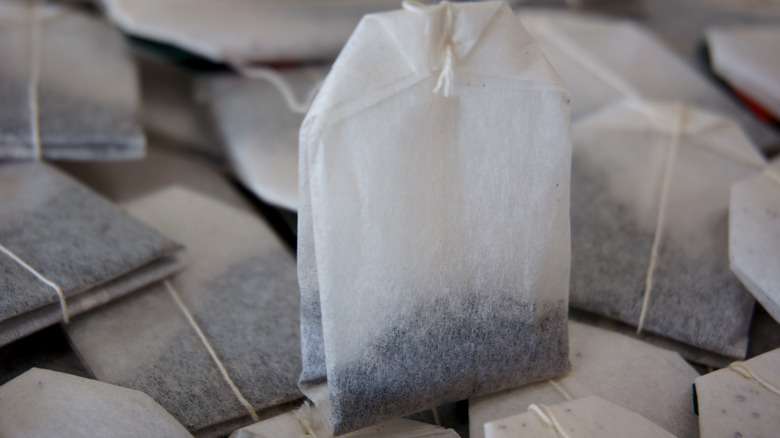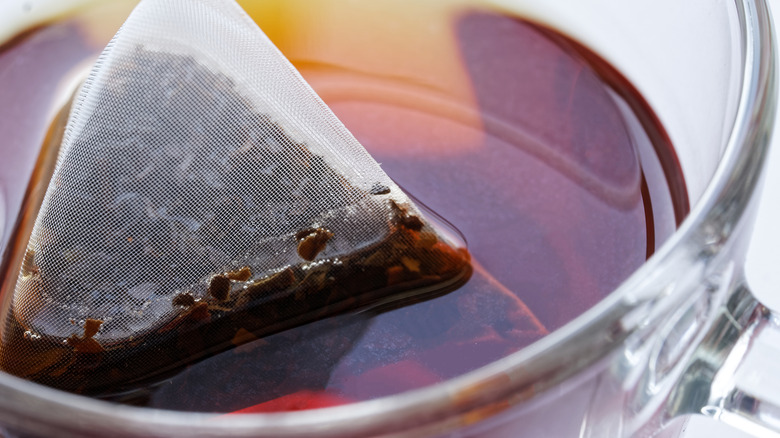The Teabag Trick To Give Soups And Sauces A Boost Of Flavor
Few institutions are as deeply rooted in the cultural zeitgeist quite like afternoon tea time. Sipping a steaming cup of tea is as experiential as it is delicious. If you want even more ways to enjoy your favorite tea (and why wouldn't you?), we have some good news: You can cook with it. Those teabags can give your soups and sauces a boost of flavor.
Just be sure to keep an eye on your teabag to prevent it from over steeping. With herbal teas, longer steep times can pleasantly intensify the flavor. (Think extra minty peppermint tea or extra earthy rosehip tea.) But, when it comes to black and green teas, a very strong flavor isn't quite as welcome. While nobody wants a weak, flavorless sip, over steeping black and green tea causes their flavors to turn bitter and unpalatable. (Picture an overly perfumed Earl Grey or jasmine tea. Appetizing?) Black tea takes three-to-five minutes, and green tea takes just a minute or two. Herbal teas should be steeped for at least five minutes but can go for as long as you like. Expired tea leaves will also produce an "off" flavor, so be sure to give them a second look before tossing 'em in the sauce. Keep this in mind as you select which tea to infuse in your soups and sauces. Once you've picked your tea, here's how to take it from the mug to the dinner plate.
Steep your way to dimensional flavors
You can steep those teabags directly into the milk or heavy cream you plan to use for your sauce. You can also steep your tea separately and add it into the mix afterward, just like you'd infuse a cake or cookie batter with tea as a liquid component. Or simply steep a few teabags directly in your broth as it cooks. Set a timer to avoid over steeping, and steep in steaming hot (but not boiling) water.
You could even stir some finely ground tea leaves directly into your dry ingredients. We mean as fine a grind as possible here; whip out a food processor or mortar and pestle to get the job done. This might work well in soups with a dense amount of dry components, like a three-bean soup. (Lapsang souchong chili, anyone?) Amp up your sauces and make an oolong bechamel or rooibos remoulade. Infuse your next yellow curry sauce with some chai. Try steeping lemongrass tea in your pho broth. Bai mu dan white tea could add a sweet-savory nuttiness to any vegetable broth. Pop a bag of sencha green tea in the broth of your next chicken soup for earthy dimensionality. Stir some hibiscus tea into a miso broth. If you're making a soup with rice or couscous, you could even cook your rice directly in the tea instead of water.

